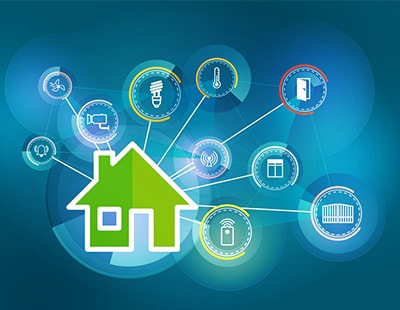The start of a new decade is a rich time for grand predictions to be made about how our homes will look in the future, and the beginning of the 2020s has been no different.
Research carried out by furniture retailer Arlo & Jacob has examined a range of sources and articles to determine what the future of living spaces - such as the kitchen, bedroom and living room - will look like over the next few decades.
It found that, by 2030, windows will be made of adjustable smart glass with residents able to adjust the tint and transparency using a remote control. By 2040, attending live events and sports matches will be made easier with the help of virtual reality headsets that will enable users to sync up with live feeds, while ten years after that reusable water is set to be gracing our homes, with the water from sinks draining into filters and feeding hydroponic plant systems.
Visualising the future of living spaces in a series of illustrations, Arlo & Jacob explores how the rapid advances in technology – which has already brought increased use of virtual reality (VR), augmented reality (AR) and smart tech in our lives – could make our homes more interactive than ever in the future.
It says Amazon Alexa, Hive smart products and robot vacuum cleaners are just a snapshot of how technology has already integrated into our living spaces, but wanted to ask the question: how is this going to change over the coming decades and what will the future of living spaces actually look like?
The future of the living room
The average Brit spends almost 10 years of their life watching TV - many of which are situated in the living room, highlighting how important living spaces and entertainment in those spaces are to people. Research by John Lewis last year also suggested that the living room is the true heart of the home, with over half of 3,000 customers surveyed saying they spend the most time in this room.
It’s predicted that entertainment will feature heavily in living rooms of the future, with people potentially able to virtually attend live events and sports matches from the comfort of their own home. This will be achieved with the help of VR headsets that will sync up to live feeds, with this ‘seamless experience’ expected to be introduced into homes by 2040.
But it’s not only entertainment that is anticipated to transform in living rooms, design and interiors are expected to undergo a change, too. By 2050, the research claims accessories and ornaments will be 3D printed.
The future of the kitchen
The findings suggest that kitchens of the future will be full of helpful, sustainable and technologically integrated appliances, with robotic assistants being one of them.
Robotic assistants are set to help Brits in the kitchen, partaking in activities such as preparing vegetables and greeting guests, by 2040.
Most people will have gone to check the sell-by date on some food in their fridge, only to realise it needs to be used up that day. By 2025, though, a built-in camera on a home’s worktops and tables could be able to recognise the food and suggest recipes, cooking instructions and a timer directly onto the table surface.
The future of the bedroom
By 2040, the research claims mirrors will become personal stylists, offering suggestions on outfits and accessories based on the contents of a person’s wardrobe, their previous choices, their schedule for the day and even the weather. They could even be able to make suggestions on combinations that will complement each other and come up with suggestions on items to buy if what an outfit needs isn’t already in the wardrobe.
In just over a decade’s time, meanwhile, the UK should start to see smart wallpaper being integrated onto walls so that people can watch films on a big screen from the comfort of their beds.
“Technology is constantly progressing and it doesn’t seem to be slowing down,” Timothy Newsome, marketing director at Arlo & Jacob, said. “Living spaces such as the kitchen and living room are a big aspect of our lives, so it’s only right that AR and VR will become more integrated to improve those spaces.”
He added: “It’s not just entertainment features that are adjusting with the times though, things such as personalised sofas that adapt to their customers’ needs will be available by 2040. It’s really exciting to see what the future of living spaces will look like in years to come.”
In his Property Natter column on our sister site Estate Agent Today, Nat Daniels last year examined the homes of the future, while climate change and sustainability concerns are influencing development decisions at the very highest level – with the Labour-led Welsh government revealing that all new homes in Wales will only be heated and powered by clean energy from 2025.
The desire for greater sustainability, energy efficiency and eco-friendly homes is likely to have as much impact on the new homes of the future as AR, VR and smart tech.









.png)










Join the conversation
Be the first to comment (please use the comment box below)
Please login to comment